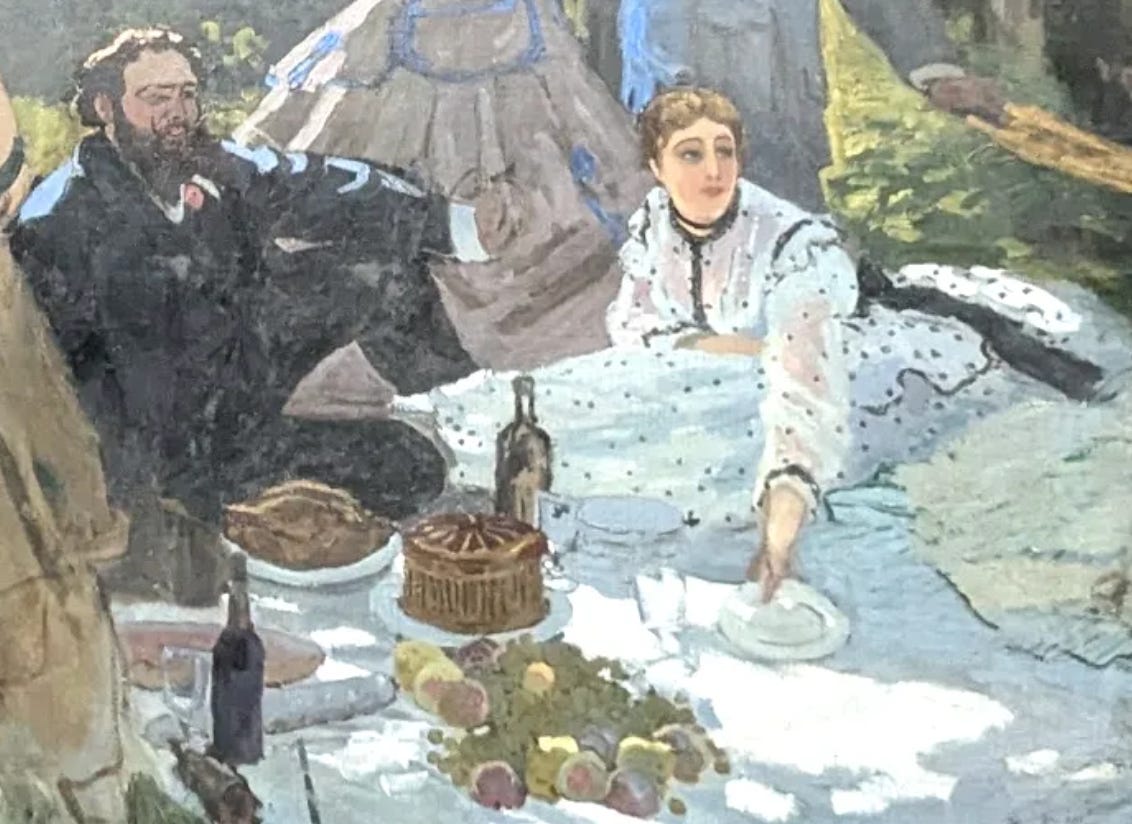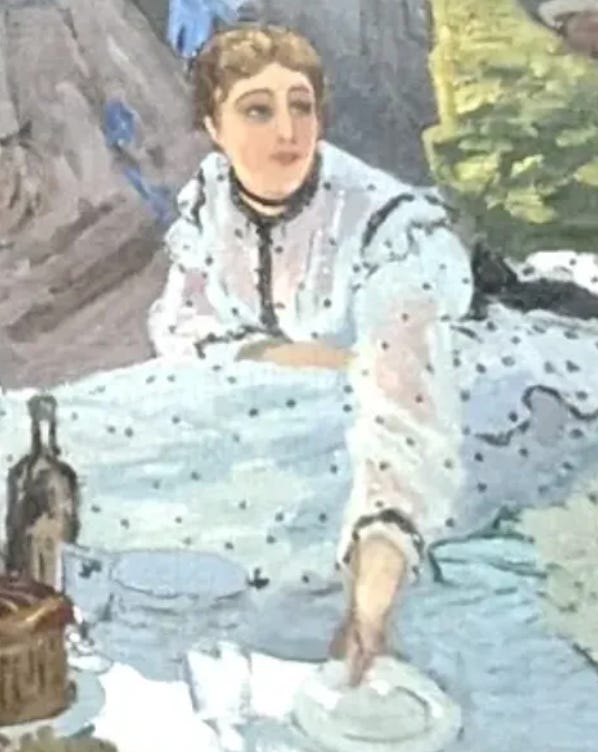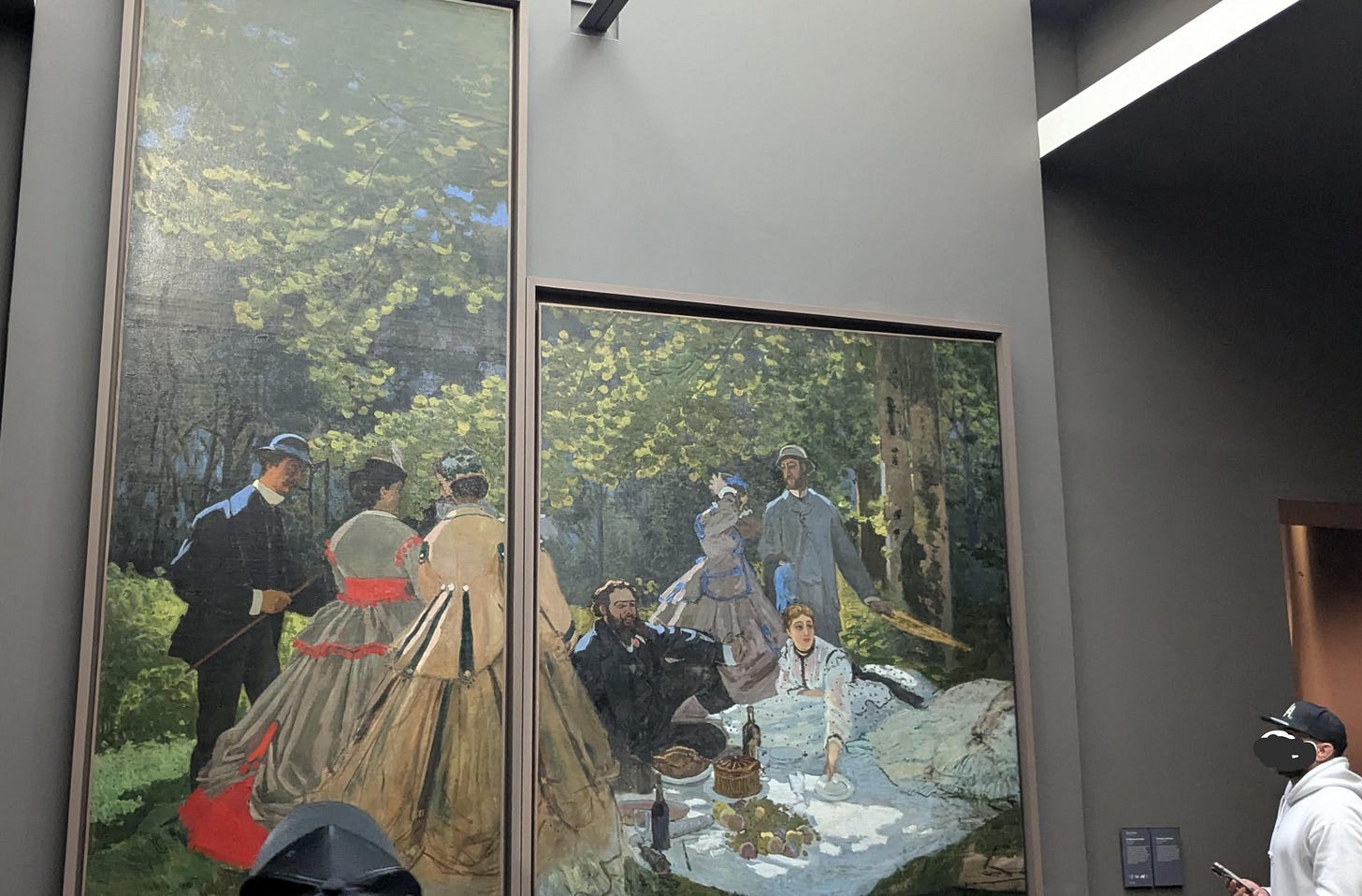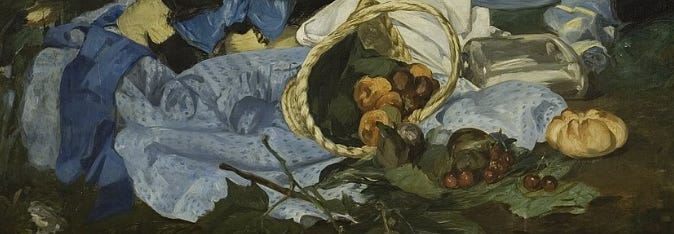(It should take about three minutes to read this 655-word essay. There are links at the end to sources. Thank you for spending time with Snack.)
How many pictures did Claude Monet (1840-1926) paint over his long and productive life?
Quite a few.
The exhaustive overview, or catalogue raisonné, of Monet’s work by art dealer Daniel Wildenstein documents about 2,050 pictures.
“Le Déjeuner sur l'herbe” (Luncheon on the Grass) is not among the best of them, although it certainly has merit.
It’s an extremely pleasant painting, but far from perfect. For example. there’s something cartoonish about the woman in the center.
But the painting works well when seen in person.
It commands attention even in competition with the many masterpieces in the rich collection of the Musée d'Orsay in Paris.
Monet created his “Déjeuner sur l'herbe” as both a compliment and a challenge to Edouard Manet (1832-1883).
Manet’s “Déjeuner sur l'herbe” painting drew laughter and scandal from the public when he exhibited it in 1863.
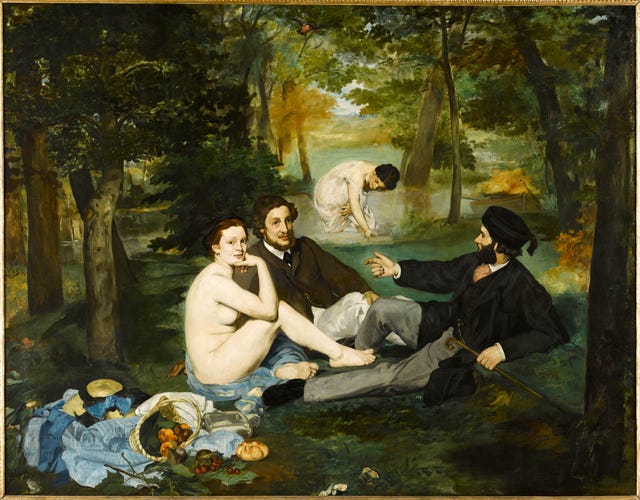
But this painting made a different impression on Manet’s fellow artists.
“Manet's refusal to conform to convention and his initiation of a new freedom from traditional subjects and modes of representation can perhaps be considered as the departure point for Modern Art,” says Musée d’Orsay on its website.
Monet was intent on making a similar giant painting — but in his own style, which differed markedly from Manet’s.
Manet, being Manet, had gone for the bold gesture in his “Déjeuner sur l'herbe,” with the naked woman in the center of his work.
It’s a painting that makes us think.
Why is this naked woman looking directly at us? What are the men discussing? What’s up with the lady in the background?
The “déjeuner” — picnic meal— is an afterthought, abandoned, tumbled off to the side.
Monet, being Monet, wants us to share in the pleasures of his “Déjeuner sur l'herbe.”
He draws our attention to the play of light on the trees, to the details of the beautiful dresses the women wear.
The meal is front and center in Monet’s painting. It’s as if we were being invited to join in.
.
“Le Déjeuner sur l'herbe” was no picnic for Monet
Why is Monet’s “Le Déjeuner sur l'herbe” so oddly shaped?
Because he ran out of money while working on it.
As the famous story goes, Monet had to give the painting to his landlord as security for rent. The landlord is said to have put it in a cellar where the painting became moldy. Monet later regained possession of it and cut it up. Part of this painting has disappeared.
For Monet, this project was a bit of an obsession. The Musée d'Orsay website has an English translation of Monet’s 1865 comment to a friend about this: "I can think of nothing but my painting and if I had to leave it, I think I would go mad.”
But leave it, at least temporarily, Monet did.
He couldn’t finish this painting in time for an 1866 salon as he had hoped. Discouraged, Monet set aside large projects for a while. But luckily for us, he was able to salvage part of this painting, leaving it for people to enjoy today.
So, to recap, Monet’s “Le Déjeuner sur l'herbe” was no picnic for him.
That may be a comfort when we have setbacks in our own work, to think that a painter as ultimately successful as Monet also struggled.
Request: Please share with me in a comment a memory of a picnic or another meal or even just a snack you had outdoors.
Sources:
Musée d'Orsay “Le Déjeuner sur l'herbe” webpages: Monet | Manet
Wildenstein Plattner Institute: Monet
For more on Monet, check out my essay on Medium.




